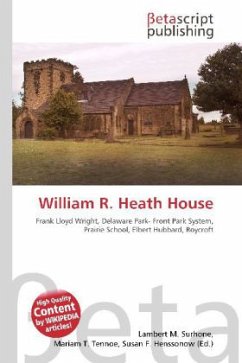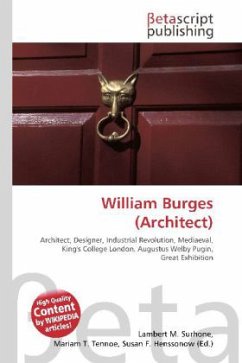
William Butterfield
Versandkostenfrei!
Versandfertig in 6-10 Tagen
23,99 €
inkl. MwSt.

PAYBACK Punkte
12 °P sammeln!
Please note that the content of this book primarily consists of articles available from Wikipedia or other free sources online. William Butterfield was a Gothic Revival architect and associated with the Oxford Movement (or Tractarian Movement). William Butterfield was born in London in 1814. His parents were strict non-conformists and ran a chemist shop in the Strand. He was one of nine children and was educated at a local school. At the age of 16, he was apprenticed to a builder in Pimlico, Thomas Arber, who later became bankrupt. He studied architecture under E. L. Blackburne (1833 1836). Fr...
Please note that the content of this book primarily consists of articles available from Wikipedia or other free sources online. William Butterfield was a Gothic Revival architect and associated with the Oxford Movement (or Tractarian Movement). William Butterfield was born in London in 1814. His parents were strict non-conformists and ran a chemist shop in the Strand. He was one of nine children and was educated at a local school. At the age of 16, he was apprenticed to a builder in Pimlico, Thomas Arber, who later became bankrupt. He studied architecture under E. L. Blackburne (1833 1836). From 1838 to 1839, he was an assistant to Harvey Eginton, an architect in Worcester, where he became articled. He established his own architectural practice at Lincoln''s Inn Fields in 1840. From 1842 Butterfield he was involved with the Cambridge Camden Society, later The Ecclesiological Society. He contributed designs to the Society''s journal, The Ecclesiologist. His involvement influenced his architectural style. He also drew religious inspiration from the Oxford Movement and as such, he was very high church despite his non-conformist upbringing.












